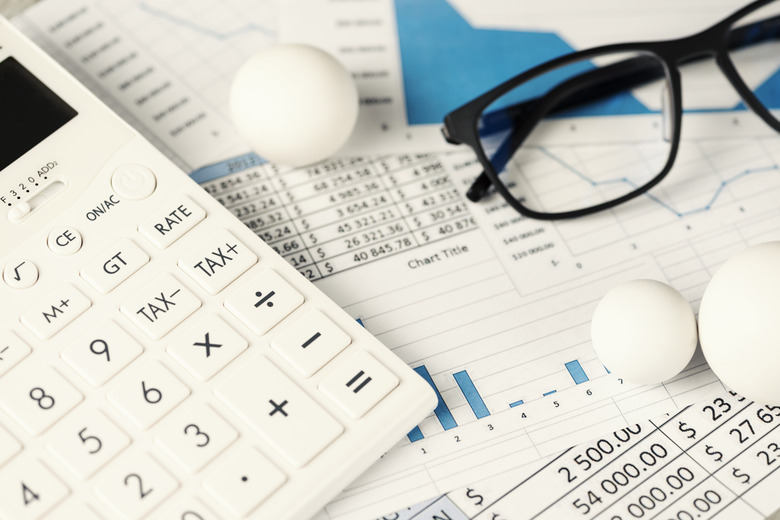How To Round Numbers To Three Decimal Places
Rounding numbers up or down is a way of approximating them when the additional accuracy is not needed. In particular, decimals accurate to several places can become unwieldy and difficult to remember, so in a complex calculation, you may want to make things simpler by rounding them. When you round to the third decimal place, you're rounding to the nearest thousandth. The procedure for doing this is simple.
TL;DR (Too Long; Didn't Read)
While rounding an answer can be used during a calculation, it is the best practice to round according to significant figures with real data. Significant figures are essentially rounding rules for rounding decimals and whole numbers in scientific results.
Rounding to Three Decimal Points
Rounding to Three Decimal Points
Count numbers to the right of the decimal and stop when you reach the third number. That number will be the last digit in the rounded number, and your job is to decide whether to leave it as it is, which is rounding down, or add one unit, which is rounding up.
Look at the fourth number in the decimal series. You round down (leave it as it is) if the fourth number is less than 5 and round up (add 1 to it) if it's more than 5. If the number is 5, you usually round up, but this often up to the calculation.
After you round the third digit, remove all the numbers following the third number to express the rounded number in its reduced form with only three digits following the decimal.
Extending the Rounding Process
Extending the Rounding Process
This same process can be applied to any number of decimal places. We typically discuss decimal places with a place value: the 1st number to the right of the decimal point is the tenths place; the 2nd decimal is the hundredths place; the 3rd decimal place is the thousandths place; followed by the ten thousandths place, hundred thousandths place, and so forth.
TL;DR (Too Long; Didn't Read)
The ones place indicates the first digit to the left of the decimal point. If we round to the nearest whole number, we use the ones place as our reference.
To round to the nearest hundredth, nearest tenth, or nearest nth decimal place we simply look at the next digit to the right of our decimal place. If it is greater than or equal to 5, we round up, and if it is less than 5, we round down.
This method works for negative numbers and positive numbers. If you want to round fractions or mixed numbers, you need to convert the fractional component to a decimal.
Examples:
Examples:
Example 1: The mathematical constant pi (π) is a non-repeating decimal that, as far as anyone knows, has an infinite number of digits after the decimal. Pi, accurate to 10 decimal places, is 3.1415926536.
To round this to the third decimal (the thousandths digit), note that 1 is the third number in the decimal series. The number following it is 5, and the number after the 5 is not zero. This is an indication to round up, so the 1 should become 2, making pi rounded to three decimal places 3.142.
TL;DR (Too Long; Didn't Read)
This is 4 significant figures of pi.
Example 2: The square root of 2 is a number that scientists often encounter. Here it is to 10 decimal places: 1.4142135623.
Note that the third number in the decimal series is 4, and the number after it is 2. Because 2 is less than 5, the third number should be rounded down, which means leaving the 4 unchanged: 1.414.
Cite This Article
MLA
Deziel, Chris. "How To Round Numbers To Three Decimal Places" sciencing.com, https://www.sciencing.com/round-numbers-three-decimal-places-8447024/. 25 July 2023.
APA
Deziel, Chris. (2023, July 25). How To Round Numbers To Three Decimal Places. sciencing.com. Retrieved from https://www.sciencing.com/round-numbers-three-decimal-places-8447024/
Chicago
Deziel, Chris. How To Round Numbers To Three Decimal Places last modified July 25, 2023. https://www.sciencing.com/round-numbers-three-decimal-places-8447024/
